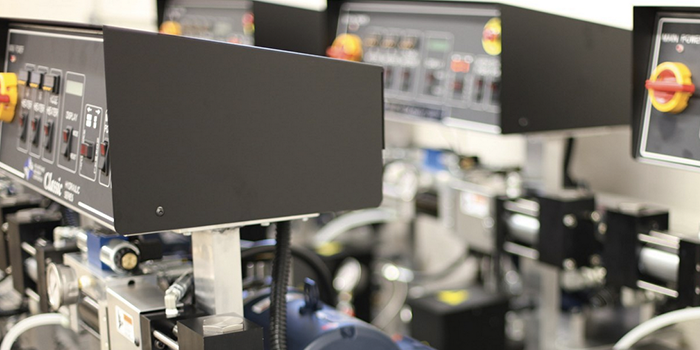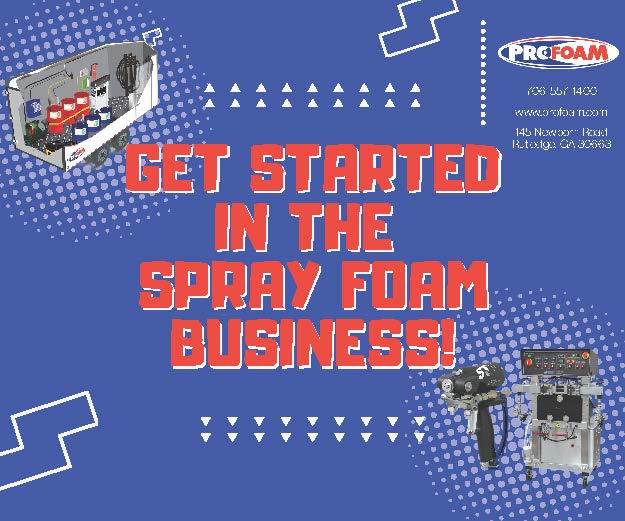
Spray Foam Machines

Back to Education Center | Equipment Guide
Proportioning Machines
Proportioners, sometimes called spray foam machines, are complex pieces of equipment. They require a comprehensive body of knowledge to not only operate and maintain, but also just to purchase. Indeed, when purchasing a proportioner, contractors should brush up on the major components that will affect virtually every aspect of the application process, from the maximum hose length to startup time.
Pump Drive System
The drive system is what forces the metering pumps to go up and down, or back and forth. The metering pumps are the pumps that proportion, or ratio, the materials and transport them out of the machine through the heated hoses, and eventually to the gun. Most drive systems are electrical, hydraulic (fluid-driven), or pneumatic (air-driven). Hydraulic machines are considered to be the highest-performing proportioners, while pneumatic and electric machines are typically less expensive, offering a blend of value and performance.
Output
A machine’s output rating is a measurement of how much mixed foam the machine will dispense in any given time period. Output is typically quantified in pounds per minute (lb./min), kilograms per minute (kg/min), or gallons per minute (gpm). As stated above, hydraulic machines offer the most performance, delivering outputs of up to roughly 50 lb./min, while electric and pneumatic machines can offer maximum outputs upwards of 30 lb./min. For coatings applications, outputs are generally expressed in gpm and only electric and hydraulic drive systems are recommended, with the former offering outputs of 1-2 gpm and the latter offering outputs of 2-3 gpm.
Pressure Rating
The machine’s pressure rating is a measurement of how much pressure the machine will generate to mix the chemicals at the spray gun. Pressure is typically quantified in pounds per square inch (psi.) or bar for metric pressure measurement. Keep in mind that equipment manufactures often classify their machine’s maximum pressure rating as a static pressure, so operating pressure is often less than what is rated. It is important to make sure that your spray gun’s output and pressure ratings are matched to your machine. Pressures vary by machine, applications and setup, with pneumatic machines being capable of 3,000 psi and electric and hydraulic machines topping out at 3,500 psi. Higher pressures are intended for coating applications.
Heating Capacity
Most spray foams are commonly processed at 140°F-150°F. This temperature requirement is primarily to lower the viscosity of the liquid chemical components to assist in pumping and mixing. Often times the temperature of the material can affect spray pattern development and the physical properties of the finished foam product, so it is very important to assure the machine’s heating system is in good working order, and of enough capacity to keep up with the output of the machine. Heating wattages ranging from 6-15 kW are common for electric and pneumatic machines, while hydraulic machines can offer 10-20 kW. These differences are generally related to the types of applications for which the machines are intended.
Electrical System
Most proportioning machines have heaters and control systems which require an electrical connection. Hydraulic machines use an electric motor to power the hydraulic drive system, which also requires electricity. Proportioning machines can typically be ordered by the manufacturer to operate anywhere in the world. Common electrical voltages are single-phase 220v, three-phase 220v and 380v. Know where your machine will be used and be sure it is compatible with the available electrical system.






